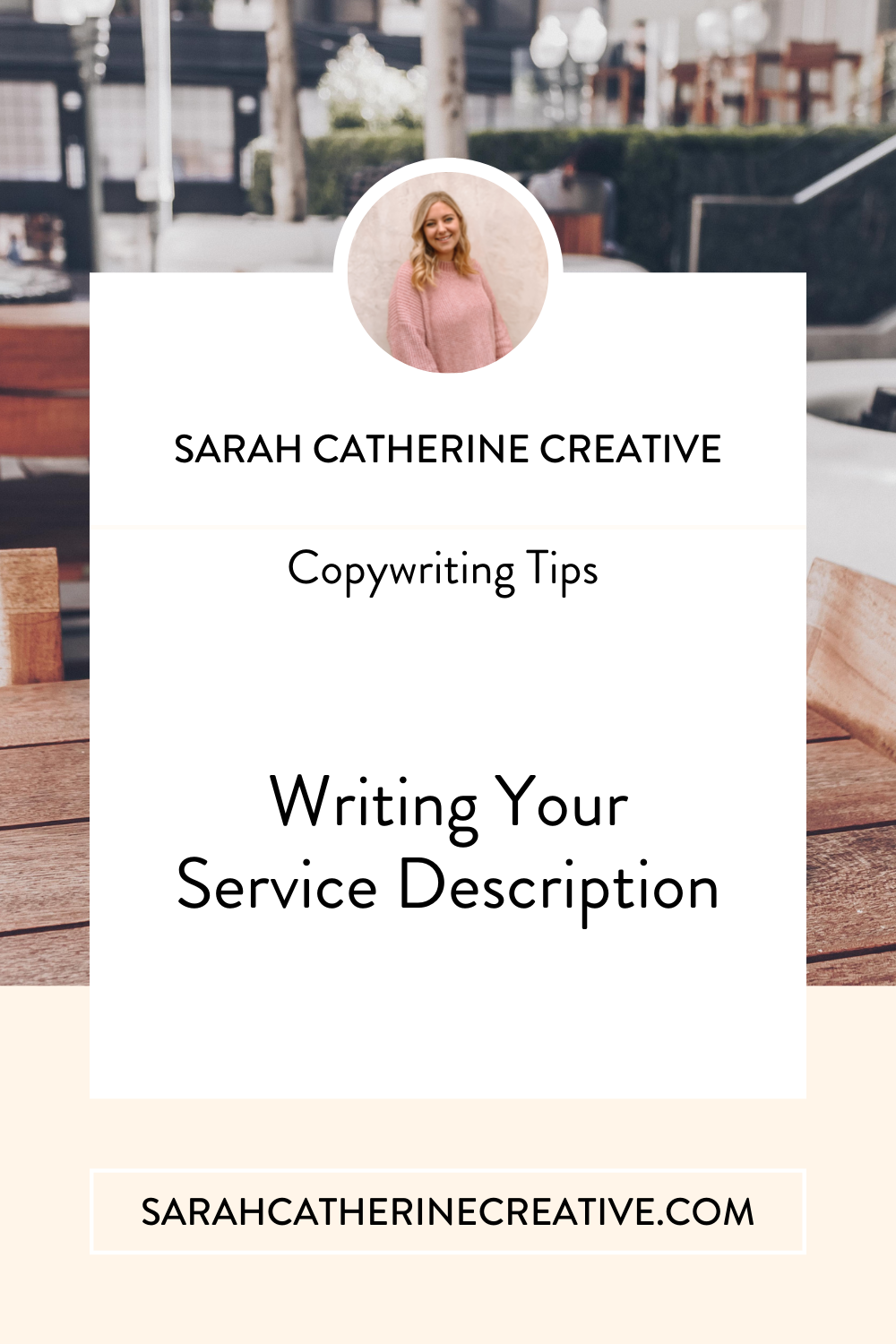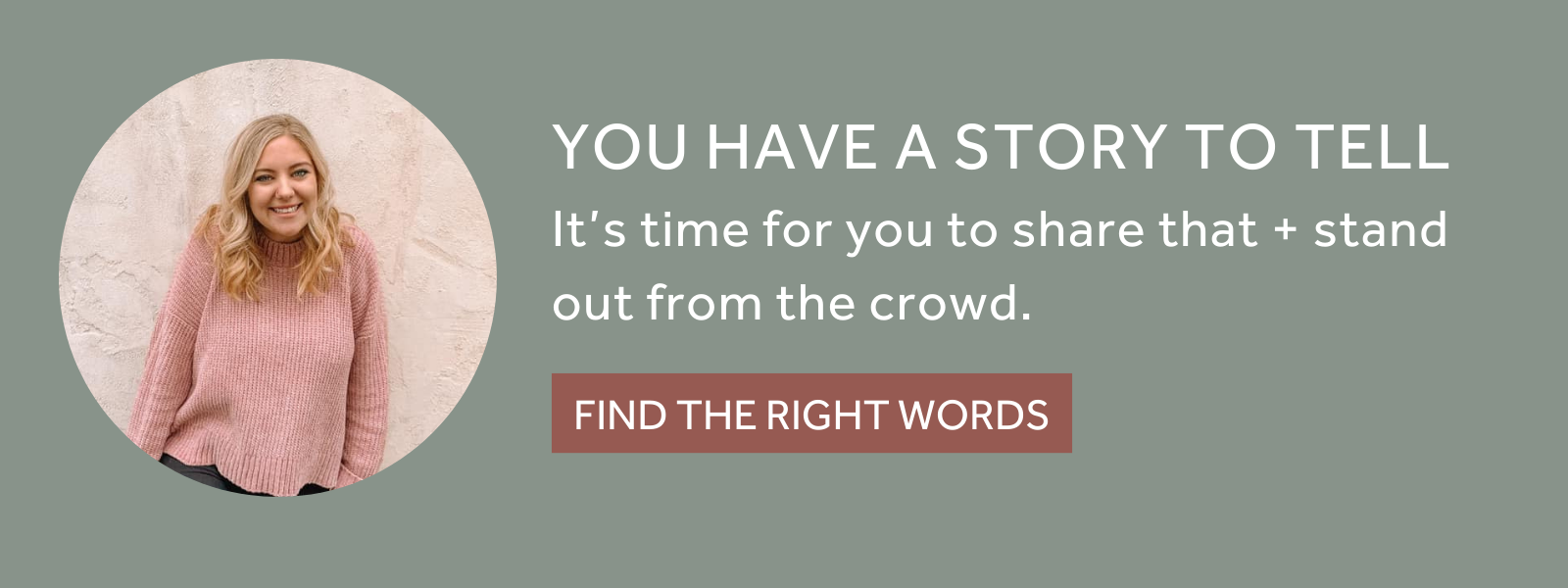Top Copywriting Tips For Writing Your Service Description
If you have ever been stuck coming up with service copy for your website, you are certainly not alone! I used to sit at my laptop for hours, wondering how I would write about what I do but somehow make the copy sound different from every other service provider out there? Seems impossible, right? Not at all!
Why Your Service Descriptions Matter As A Small Business
Did you know that 88% of customers research a product before buying it?
In our digital-obsessed world, we all want detailed information about any new product or service we’re considering buying, and we know it’s all right there at our fingertips.
So, product and service descriptions do matter. But the question is, why?
-
They highlight value. When a client considers hiring you, the only question in their mind is, “How is this going to benefit me?”
-
They describe the benefits. Every service has features that directly tie into its benefits. A good service description emphasizes those benefits, increasing the desire and need for your services.
-
They showcase what makes you unique. What makes your services different from your competitors? A good description will communicate that difference to your audience, so your offering stands out from the crowd online.
A great service description answers the top questions your potential clients will ask. And that makes it easier and quicker for them to decide whether to book you or not.
Here are my top tips on how you can write about your service offerings on your website!
1. Who needs this service?
Your target audience is the group of people who want to buy your products or services.
For example, if you’re a wedding photographer, your target audience might be women under the age of 50 who are in a committed relationship and who live within a 50-mile radius of where you work.
Once you define who your target audience is, you’ll be able to move on to the next step: gathering information and using that data to write exactly what they want to hear!
2. What is the reason for this service or offering? Why do people need to buy it?
Does your ideal client need their time back? Maybe they’re busy juggling all the creative and marketing work for their business when they’d rather focus on their sweet spot and what they do best.
Think about what deeper reason people need your help, and make it clear that you understand and you’re there to provide that help.
3. How does the client feel after hiring you for this service?
What experience are they looking for? Is your ideal client looking for a business best friend who partners with them and walks alongside them? Or maybe they’re most excited about the relief of knowing someone else who’s an expert is taking work off their plate.
Think about feelings – joy, relief, excited, hopeful, proud, confident – and weave those feelings into your descriptions.
4. Speak directly to your client.
Now that you know who you’re talking to and what they’re looking for, it’s time to put it into words. Show your clients where they can be in the future because of working with you. Because you’re an expert in your field, you need to bring your clients along on a journey.
Don’t leave your clients wondering which service is best for them — let them know in a clear, concise way.
Adding something to each service description like, “This service is best for someone who…” can help seamlessly guide your audience, and you’ll make sure the people reaching out to work with you are a perfect fit!
5. What proof do you have?
It’s all about trust when you’re selling, and testimonials are your best asset in making the sale. People are more likely to buy when they see that other people have had a positive experience, particularly when they have something in common.
You can include testimonials or supporting data at appropriate moments in the text, as a graphic element, or in the sidebar if you have one. Choose testimonials that align with your ideal client and mention the key benefits and pain points you’re highlighting in the page content.
6. Use reader-friendly formatting
We already know that people scan and skim web pages. Our attention spans are all short, and there’s always another website or app fighting for our attention.
So to ensure that your readers pick up all the key info, present your services in an easy-to-consume format. Do this by:
-
Using subheadings to separate text – readers will scan these to find relevant information and then read the information under these headings.
-
Using bullet points to include key information without getting lost in the depths of a paragraph.
-
Using whitespace to guide readers through the page and ensure they’re not overwhelmed by blocks of text.
7. What keywords do you want to show up for?
If you’re selling your products or services through the internet, you have to focus on keyword optimization and SEO.
Every day, people are searching for products using search engines like Google. When they’re searching, they have a high buyer’s intent. That means they’re very close to buying and are just looking for the right product or service.
You want your offerings to be shown to these motivated prospects, and the only way that’s going to happen is to optimize your product or service descriptions with high-value keywords.
To find the best keywords for your services, here are three good sources you can use:
-
Google Keyword Planner: Google Keyword Planner, a feature of Google Ads, was the original tool people used to get information regarding keywords. It shows you how many searches are being done for a particular keyword and its competition.
-
Answer The Public: For those who need a tool that helps find a lot of long-tail keywords, Answer The Public is a good option. This handy tool lists keywords related to a specific keyword you enter.
Before you begin your keyword research, it’s important to understand the benefits of using ‘long-tail’ keywords. These keywords have high value and less competition, so it’ll be easier for your service pages to rank higher.
Once you’ve found the appropriate keywords for a particular product or service description, add them in the following places:
-
your description headline (i.e., H1 tag),
-
the body text, two or three times,
-
sub-headings (i.e., H2 and H3 tags),
-
metadata descriptions
Knowing how to write service descriptions can make all the difference for your small business, and I am so hopeful these tips help get you started!






I’m a wife, mom, and storyteller who has spent more than five years helping 100+ brands with their marketing. I’m here to tell stories with heart, and empower other women to boldly share theirs.